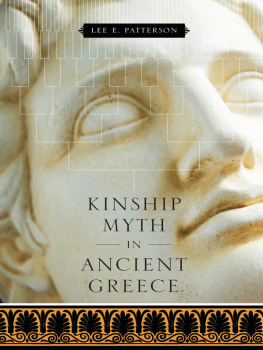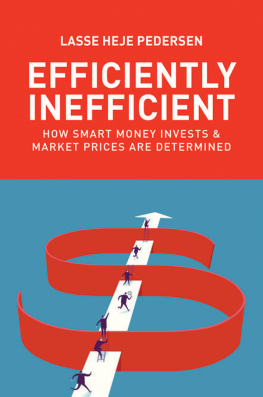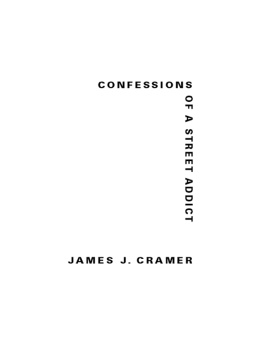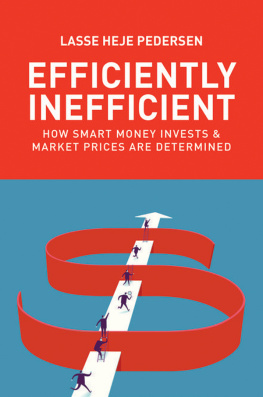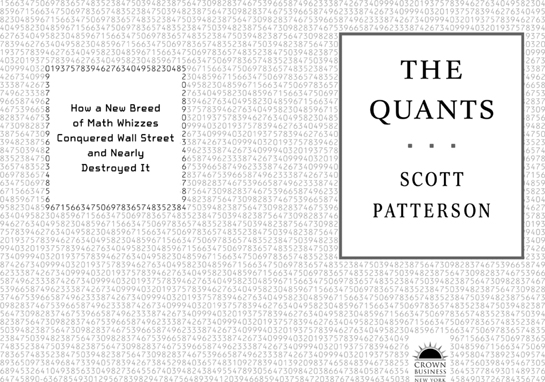The Players
Peter Muller, outspokenly eccentric manager of Morgan Stanleys secretive hedge fund PDT. A whip-smart mathematician who occasionally took to New Yorks subways to play his keyboard for commuters, in 2007 Muller had just returned to his hedge fund after a long sabbatical, with grand plans of expanding operations and juicing returns even further.
Ken Griffin, tough-as-nails manager of Chicago hedge fund Citadel Investment Group, one of the largest and most successful funds in the world. In the years before the crash, Griffins indulgences included the purchase of an $80 million Jasper Johns painting and a Paris wedding at the Palace of Versailles.
Cliff Asness, sharp-tongued, hot-tempered founder of AQR Capital Management, a hedge fund with nearly $40 billion in assets under management at the time of the crash. Mere days before the crash, Asnesss hedge fund was on the verge of filing the final papers for an initial public offering.
Boaz Weinstein, chess life master, card counter, and powerful derivatives trader at Deutsche Bank, who built his internal hedge fund, Saba (Hebrew for wise grandfather), into one of the most powerful credit-trading funds on the planet, juggling $30 billion worth of positions.
Jim Simons, the reclusive, highly secretive billionaire manager of Renaissance Technologies, the most successful hedge fund in history, whose mysterious investment techniques are driven by scientists poached from the fields of cryptoanalysis and computerized speech recognition.
Ed Thorp, godfather of the quants. As a math professor in the 1950s, Thorp deployed his mathematical skills to crack blackjack, unifying the key themes of gambling and investing, and later became the first math genius to figure out how to use similar skills to make millions on Wall Street.
Aaron Brown, the quant who used his math smarts to thoroughly humiliate Wall Streets old guard at their trademark game of Liars Poker, and whose career provided him with a front-row view of the explosion of the mortgage-backed securities industry.
Paul Wilmott, quant guru extraordinaire and founder of the mathematical finance program at Oxford University. In 2000, Wilmott began warning of a mathematician-led market meltdown.
Benoit Mandelbrot, mathematician who as early as the 1960s warned of the dangers wild market swings pose to quant modelsbut was soon forgotten in the world of quants as little more than a footnote in their long march to a seemingly inevitable victory.
We have involved ourselves in a colossal muddle, having blundered in the control of a delicate machine, the working of which we do not understand. The result is that our possibilities of wealth may run to waste for a timeperhaps for a long time.
J OHN M AYNARD K EYNES ,
The Great Slump of 1930
Peter Muller stepped into the posh Versailles Room of the century-old St. Regis Hotel in midtown Manhattan and took in the glittering scene in a glance.
It wasnt the trio of cut-glass chandeliers hung from a gilt-laden ceiling that caught his attention, nor the pair of antique floor-to-ceiling mirrors to his left, nor the guests svelte Armani suits and gem-studded dresses. Something else in the air made him smile: the smell of money. And the sweet perfume of something he loved even more: pure, unbridled testosterone-fueled competition. It was intoxicating, and it was all around him, from the rich fizz of a fresh bottle of champagne popping open to the knowing nods and winks of his friends as he moved into a room that was a virtual murderers row of topflight bankers and hedge fund managers, the richest in the world. His people.
It was March 8, 2006, and the Wall Street Poker Night Tournament was about to begin. More than a hundred well-heeled players milled about the room, elite traders and buttoned-down dealmakers by day, gambling enthusiasts by night. The small, private affair was a gathering of a select group of wealthy and brilliant individuals who had, through sheer brainpower and a healthy dose of daring, become the new tycoons of Wall Street. This high-finance haut mondeperhaps Muller most of allwas so secretive that few people outside the room had ever heard their names. And yet, behind the scenes, their decisions controlled the ebb and flow of billions of dollars coursing through the global financial system every day.
Mixed in with the crowd were professional poker players such as T. J. Cloutier, winner of sixty major tournaments, and Clonie Gowen, a blond Texan bombshell with the face of a fashion model and the body of a Playboy pinup. More important to the gathering crowd, Gowen was one of the most successful female poker players in the country.
Muller, tan, fit, and at forty-two looking a decade younger than his age, a wiry Pat Boone in his prime, radiated the relaxed cool of a man accustomed to victory. He waved across the room to Jim Simons, billionaire math genius and founder of the most successful hedge fund on the planet, Renaissance Technologies. Simons, a balding, white-bearded wizard of quantitative investing, winked back as he continued chatting with the circle of admirers hovering around him.
The previous year, Simons had pocketed $1.5 billion in hedge fund fees, at the time the biggest one-year paycheck ever earned by a hedge fund manager. His elite team of traders, hidden away in a small enclave on Long Island, marshaled the most mind-bending advances in science and mathematics, from quantum physics to artificial intelligence to voice recognition technology, to wring billions in profits from the market. Simons was the rare investor who could make Muller feel jaw-clenchingly jealous.


